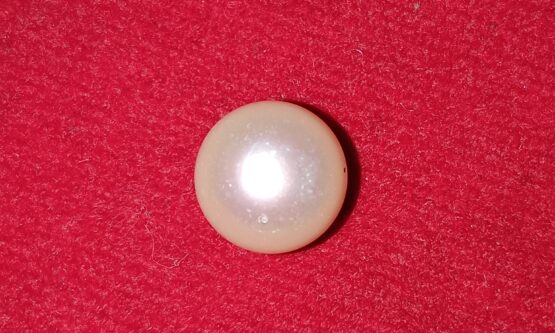Identification Of Real Pearl
Pearl gemstone is one of the 9 major gemstones and according to astrology, it is related to the Moon. Because the Moon is a planet with a calm nature, Therefore, it is believed that wearing it calms a person’s nature.
China, Japan, Australia, Indonesia, Myanmar, Sri Lanka, and India are some countries where Pearl(Moti) is produced. China is the largest producer, with Japan being second. Freshwater pearls mainly come from China and Scotland, whereas saltwater pearls are from Japan and Australia. In freshwater rivers and lakes, it is produced by mussels, while in saltwater, oysters give pearls.
Here are some tricks which will help you a lot in identification of real pearl;

1. Look for some imperfections.
A natural pearl stone is usually not perfect. Tiny blemishes and irregular surfaces are very common in these. A natural pearl’s outer surface will reflect light differently in different parts of the gem when light passes on it. Also, a fake one will look perfectly spherical.
Also read: Pearl stone benefits
2. Check the luster
Luster is the property or parameter that shows the reflection of light. The finest quality shows a very bright and strong luster, and it almost looks like the light is coming from them. In reality, one can see their reflection if they look closely, whereas this is not possible in a fake. This happens because natural pearl has Iridescence (A phenomena) In this method, real with low quality may be mistaken as fake ones.
3. Check Overtone
It shows a significant amount of overtone. Overtone is the color that appears on the outer surface when light is put on it. Fake ones do not display an overtone effect. It’s easy to tell the difference between a fake and a real one. Pass the light on your pearl stone and look for a slight shade of color when light strikes it. If it shows that little shade, it might be a real one.
4. Observe Near Drill Hole
It is drilled with holes to make necklaces. Carefully observe the whole of it. If you find the edge of a whole with perfectly rounded edges, it is a duplicate. Real ones have imperfectly round holes, and their boundaries are very well-defined. This test plays a prominent role in the identification of pearl stones.
5. Tooth Test
Alternatively, you can try scratching them gently and carefully with your teeth. The real one will make you feel rough, gritty, irregular, or uneven in your teeth. A fake will appear to have a smooth surface on the teeth. This test is a very good and easy test for pearl stone identification.
(Chemical composition)
The chemical composition of this organic gem, pearl can vary according to its place of origin. But these variations are very minor. It is made of calcium carbonate, organic matter (conchiolin), and water. Its hardness ranges from 2.5 to 3.5 on the Mohs scale. The specific gravity (S.G.) of pearls ranges between 2.20 and 2.78, and their refractive index (R.I.) lies between 1.53 and 1.686.
